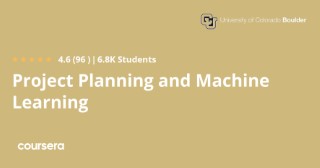The Nuts and Bolts of Machine Learning
Learn about machine learning and its applications in data analytics. Explore supervised and unsupervised techniques, including Naive Bayes, decision tree, and random forest models. Enhance your skills in feature engineering, K-means algorithm, and model optimization. Prepare for data science and advanced analytics jobs with Google’s Advanced Data Analytics Certificate.
This is the sixth of seven courses in the Google Advanced Data Analytics Certificate. In this course, you’ll learn about machine learning, which uses algorithms and statistics to teach computer systems to discover patterns in data. Data professionals use machine learning to help analyze large amounts of data, solve complex problems, and make accurate predictions. You’ll focus on the two main types of machine learning: supervised and unsupervised. You’ll learn how to apply different machine learning models to business problems and become familiar with specific models such as Naive Bayes, decision tree, random forest, and more.
Google employees who currently work in the field will guide you through this course by providing hands-on activities that simulate relevant tasks, sharing examples from their day-to-day work, and helping you enhance your data analytics skills to prepare for your career.
Learners who complete the seven courses in this program will have the skills needed to apply for data science and advanced data analytics jobs. This certificate assumes prior knowledge of foundational analytical principles, skills, and tools covered in the Google Data Analytics Certificate.
By the end of this course, you will:
-Apply feature engineering techniques using Python
-Construct a Naive Bayes model
-Describe how unsupervised learning differs from supervised learning
-Code a K-means algorithm in Python
-Evaluate and optimize the results of K-means model
-Explore decision tree models, how they work, and their advantages over other types of supervised machine learning
-Characterize bagging in machine learning, specifically for random forest models
-Distinguish boosting in machine learning, specifically for XGBoost models
-Explain tuning model parameters and how they affect performance and evaluation metrics
What you will learn
The different types of machine learning
You’ll start by exploring the basic concepts of machine learning and the role of machine learning in data science. Then, you’ll review the four main types of machine learning: supervised, unsupervised, reinforcement, and deep learning.
Workflow for building complex models
You’ll learn how data professionals use a structured workflow for machine learning. You’ll identify the main steps of the workflow and the importance of each step in the overall process. Then, you’ll learn how to apply specific machine learning models to business problems.
Unsupervised learning techniques
You’ll learn more about one of the major types of machine learning: unsupervised learning. You’ll begin by exploring the difference between supervised and unsupervised techniques and the benefits and uses of each approach. Then, you’ll learn how to apply two unsupervised machine learning models: clustering and K-means.
Tree-based modeling
Next, you’ll focus on supervised learning. You’ll learn how to test and validate the performance of supervised machine learning models such as decision tree, random forest, and gradient boosting.
User Reviews
Be the first to review “The Nuts and Bolts of Machine Learning”
You must be logged in to post a review.







There are no reviews yet.